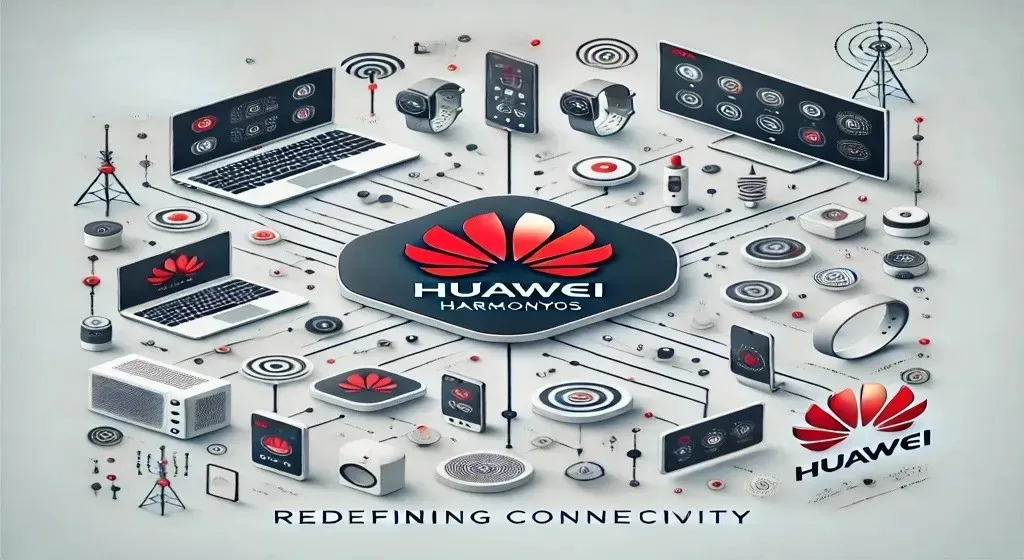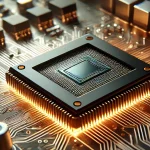Huawei HarmonyOS: Redefining Connectivity and User Experience
In the rapidly evolving landscape of operating systems, Huawei has emerged as a trailblazer with HarmonyOS, marking a significant departure from its longstanding reliance on Android. Originally introduced as Hongmeng OS and later rebranded, HarmonyOS represents Huawei’s ambitious endeavor to revolutionize user experiences across a diverse array of devices. This ambitious platform is more than just a technological shift; it is a strategic move to establish a holistic ecosystem that integrates seamlessly with the growing Internet of Things (IoT) universe.
Introduction to HarmonyOS
Harmony OS transcends the conventional boundaries of operating systems by adopting a microkernel-based architecture that emphasizes flexibility, scalability, and seamless interoperability across various platforms. Developed in response to the escalating demand for interconnected smart devices, Harmony OS aims to deliver a unified experience that enhances productivity and user satisfaction.
Historical Development of HarmonyOS
The concept of HarmonyOS has its roots in Huawei’s early research and development phases, dating back to 2012. Initially, it was conceived as a strategic alternative in case of external restrictions, especially considering the geopolitical tensions that have periodically threatened Huawei’s access to global markets. The urgency to develop HarmonyOS grew during the height of the Sino-American trade war. In May 2019, following the U.S. Department of Commerce’s decision to place Huawei on its Entity List, the company faced significant limitations on accessing essential technology and services from U.S.-based entities. This geopolitical challenge acted as a catalyst, transforming HarmonyOS from a contingency plan into a primary focus of Huawei’s development strategy.
Early speculation posited HarmonyOS as a direct replacement for Android on Huawei’s mobile devices. However, as the system evolved, Huawei clarified that HarmonyOS was intended as a versatile platform primarily targeting IoT devices, rather than a direct competitor to Android. By August 2019, the first consumer products powered by HarmonyOS were launched, showcasing the operating system’s ability to handle diverse device categories. Over the years, the platform has seen substantial updates and expansions, leading up to the announcement of HarmonyOS NEXT in 2023, which signifies Huawei’s shift towards a fully independent operating system architecture, free from any reliance on external software foundations.
Evolution and Features of HarmonyOS
Since its inception, HarmonyOS has undergone substantial evolution, with each iteration bringing new capabilities and improvements. The release of HarmonyOS 4.0 marked a significant milestone in the platform’s development, featuring an extensive codebase exceeding 100 million lines and support for over 20,000 APIs. These figures underscore Huawei’s commitment to continuous innovation and technical excellence. Key features of Harmony OS include:
- Distributed Architecture: Harmony OS leverages a distributed architecture model that allows for efficient resource sharing and streamlined communication between devices. This architecture simplifies app development by enabling a single application to run across multiple devices, dynamically allocating resources based on device capabilities. This approach not only enhances the overall user experience by ensuring seamless connectivity across IoT ecosystems but also opens up new possibilities for cross-device interactions and collaborations, fundamentally changing how devices within a network can interact.
- Enhanced Performance: The operating system integrates advanced technologies such as the Deterministic Latency Engine, which optimizes task scheduling to ensure that high-priority tasks are executed with minimal delay. Additionally, Harmony OS employs a high-efficiency Inter-Process Communication (IPC) mechanism to reduce the time required for processes to communicate with each other. These enhancements contribute to a smoother, more responsive user interface across interconnected devices, providing a performance boost that is particularly noticeable in environments with multiple interacting devices.
- Robust Security Measures: Security is a core focus of Harmony OS, which incorporates a new microkernel design and employs rigorous verification processes within its Trusted Execution Environment (TEE). This fortified security framework is designed to minimize potential vulnerabilities, protecting sensitive user data across the ecosystem. By using formal methods—a mathematical approach to software verification—Harmony OS ensures that its microkernel is highly secure, significantly reducing the risk of security breaches and data leaks.
- Unified Development Environment: Huawei’s ARK Compiler supports multi-language unified compilation, enabling developers to create adaptive applications that seamlessly adapt to diverse device specifications. This unified development framework reduces the complexity of developing for multiple devices, fostering innovation and ensuring compatibility across the expanding Harmony OS ecosystem. By providing a robust set of tools and resources, Huawei encourages developers to experiment and innovate, driving the growth of the Harmony OS app ecosystem.
Building the HarmonyOS Ecosystem
Huawei‘s strategic vision for Harmony OS extends beyond technological innovation to ecosystem development. Initiatives such as the “Hongfei Program” provide developers and partners with essential resources, including technical support, marketing collaboration, and funding opportunities. These efforts are pivotal in cultivating a dynamic community of developers and stakeholders committed to advancing Harmony OS.
Market Impact and Future Outlook
Since its launch, Harmony OS has garnered substantial momentum, positioning itself as the third-largest mobile operating system globally by early 2023. This rapid growth reflects Huawei’s strategic emphasis on diversifying its product offerings across various consumer electronics sectors, including smartphones, smart TVs, and wearables. The strong market presence of Harmony OS in China is a testament to Huawei’s ability to leverage its local expertise and market position to drive adoption. Outside China, the adoption of Harmony OS has been slower, but Huawei is actively working to expand its reach by building partnerships and demonstrating the unique advantages of its platform.
Looking ahead, Huawei aims to consolidate HarmonyOS’s market position through continuous innovation and ecosystem expansion. The company’s roadmap includes plans to integrate Harmony OS into an even broader range of devices and industries, such as automotive systems and smart infrastructure, reinforcing its versatility and appeal to consumers and businesses worldwide. By fostering a more connected and integrated world, Huawei hopes to position HarmonyOS not just as an operating system, but as the backbone of a global IoT ecosystem.
HarmonyOS NEXT: A Game-Changing Move
Harmony OS NEXT marks a pivotal milestone in Huawei’s quest for technological independence and sovereignty. This upcoming release signifies a decisive shift away from dependencies on external entities, including Linux and Android. Expected to debut in the third quarter, Harmony OS NEXT promises enhanced efficiency on Huawei’s Kirin chipsets, optimizing memory usage up to three times more effectively than Android.
Key features of Harmony OS NEXT include:
- Kernel Transition: Huawei replaces the Linux kernel with its proprietary Hongmeng kernel, enhancing performance metrics and reducing power consumption by 20%. This transition underscores Huawei’s commitment to innovation and self-reliance in software development.
- AI Integration: Harmony OS NEXT integrates advanced Artificial Intelligence capabilities, including AI image generation and enhanced virtual assistant functionalities. These innovations enhance user interactions and productivity, demonstrating Huawei’s commitment to integrating cutting-edge technologies into its ecosystem.
- Enhanced Security: Building on HarmonyOS’s robust security framework, Harmony OS NEXT introduces stringent app validation processes and end-to-end encryption for data transmission, ensuring comprehensive data protection across interconnected devices.
Implications Beyond China
While HarmonyOS NEXT initially targets the Chinese market, its potential global impact is significant. The platform’s success on the international stage will largely depend on developer adoption and app compatibility, two areas where Huawei is actively investing. By engaging with developers and offering incentives for creating Harmony OS-compatible applications, Huawei aims to build a robust app ecosystem that can compete with established players like Android and iOS. Furthermore, Huawei’s proactive approach to ecosystem expansion, including partnerships with international device manufacturers and service providers, will be crucial in overcoming geopolitical challenges and fostering broader global adoption.
Conclusion
In conclusion, Huawei’s Harmony OS represents a paradigm shift in the realm of operating systems, combining technological innovation with a forward-thinking approach to connectivity and user-centric design. As Huawei continues to evolve Harmony OS and expand its ecosystem, industry stakeholders anticipate further advancements and opportunities for innovation in the interconnected world of digital devices. The success of HarmonyOS, particularly with the upcoming release of HarmonyOS NEXT, will likely serve as a benchmark for future developments in the industry, highlighting the importance of adaptability, security, and seamless integration in the digital age.







